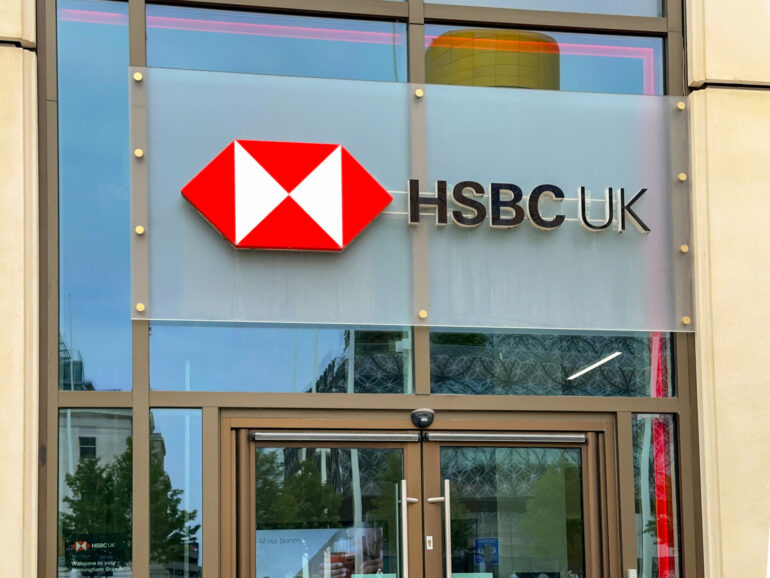Effective from tomorrow, Wednesday 13th November, HSBC is set to introduce several adjustments across its residential and buy-to-let mortgage product lines.
The rate changes will impact a broad spectrum of mortgage products, including options for existing customers seeking to switch or increase borrowing, first-time buyers, home movers, remortgagers, and those with energy-efficient properties.
For existing residential customers switching to a new rate, HSBC is increasing rates across various fixed-rate mortgage products.
The changes apply to 2-, 3-, 5-, and 10-year fixed Fee Saver and fixed Standard options across different loan-to-value (LTV) thresholds, including 60%, 70%, 75%, 80%, 85%, 90%, and in some cases, 95% LTV.
Additionally, the lender’s 5-year fixed Premier Exclusive rate is seeing an increase for LTV levels of 60% through 90%.
Similar increases will apply to customers looking to borrow additional funds, covering 2-, 3-, 5-, and 10-year fixed rates at similar LTV brackets.
First-time buyers and home movers will also encounter increases in rates across 2- and 5-year fixed options.
These apply to both Fee Saver and Standard products, and the rate hikes affect LTV levels between 60% and 95%.
Furthermore, high-value mortgages within this category, defined by LTVs at 60%, 70%, and 75%, will also be subject to rate increases.
Customers interested in mortgages for energy-efficient properties, A and B Energy Performance Ceritficate (EPC) rated homes, will also experience increased rates.
The rate changes affect both 2- and 5-year fixed Fee Saver and Standard products for various LTVs.
For residential remortgage customers, the changes are extensive.
Rates on 2- and 5-year fixed options, including Fee Saver, Standard, and high-value mortgage products, will be increased for LTV brackets from 60% to 90%.
Remortgage options for energy-efficient homes will be similarly impacted, with rate hikes on 2- and 5-year fixed Fee Saver and Standard products.
Additionally, customers opting for remortgage products with cashback will see rate adjustments on 2- and 5-year fixed Fee Saver and Standard options for LTVs up to 90%.
What’s more, HSBC is adjusting rates on buy-to-let mortgage products for existing customers who wish to switch or borrow more.
These changes will affect 2- and 5-year fixed rates in both Standard and Fee Saver categories for LTVs of 60%, 65%, and 75%.
New buy-to-let purchase products will also have increased rates on 5-year fixed Fee Saver and Standard options, including Standard products with fixed fees of £1,999 and £3,999.
Similar rate adjustments apply to buy-to-let remortgage products.
International customers with residential mortgage products will see rate increases across 2-, 3-, 5-, and 10-year fixed Fee Saver and Standard options for LTV levels of 60%, 70%, and 75%.
International buy-to-let products will also undergo increases, specifically for 2- and 5-year fixed Fee Saver and Standard rates, across LTV brackets of 60% to 75%.
In light of these changes, HSBC has advised customers to submit applications in full by midnight tonight, Tuesday 12 November. to secure existing rates before adjustments take effect.
Supporting documents must be provided within 30 days of submission, and the product finder tool along with sourcing systems will be updated to reflect these changes on November 13.
Nicholas Mendes, mortgage technical manager and head of marketing at John Charcol, said: “HSBC has announced a second rate increase within just two weeks, following a similar move by Santander to increase earlier this week.
“While many lenders have opted to maintain their existing rates to preserve business volumes and service standards, those offering competitive pricing have been forced to adjust likely due to applications levels.
“These influxes often stretch service levels, prompting rapid rate changes to manage demand effectively.
He continued: “Adding to the pressure, swap rates—key indicators used by lenders to price fixed-rate mortgages—have edged upward, further necessitating these adjustments.
“The combination of market dynamics and rising swap rates highlights the difficult landscape borrowers are navigating.”



